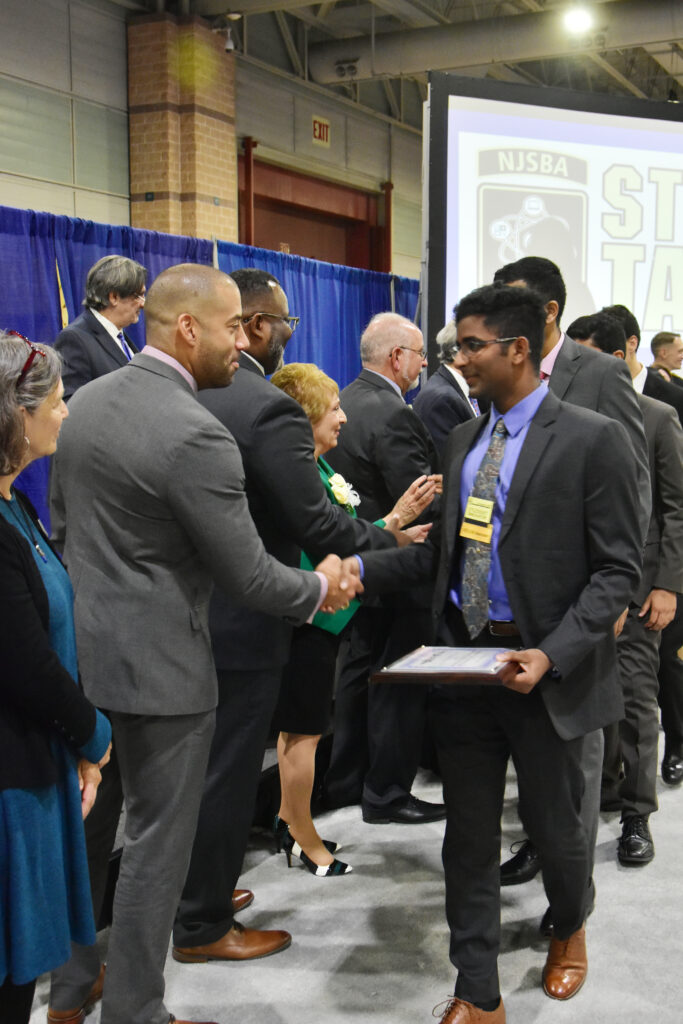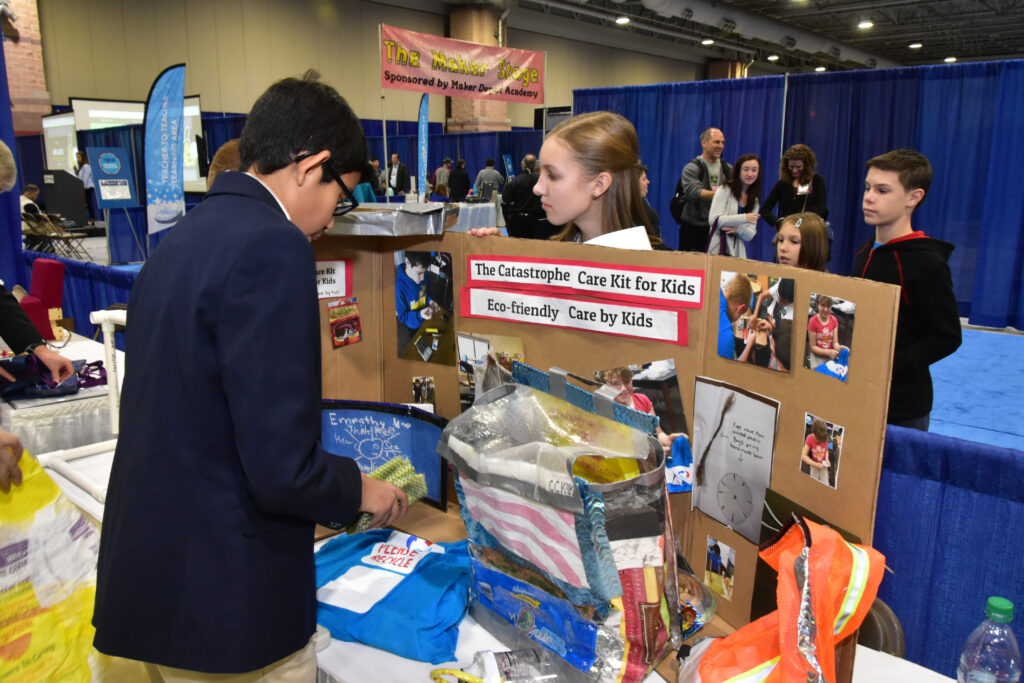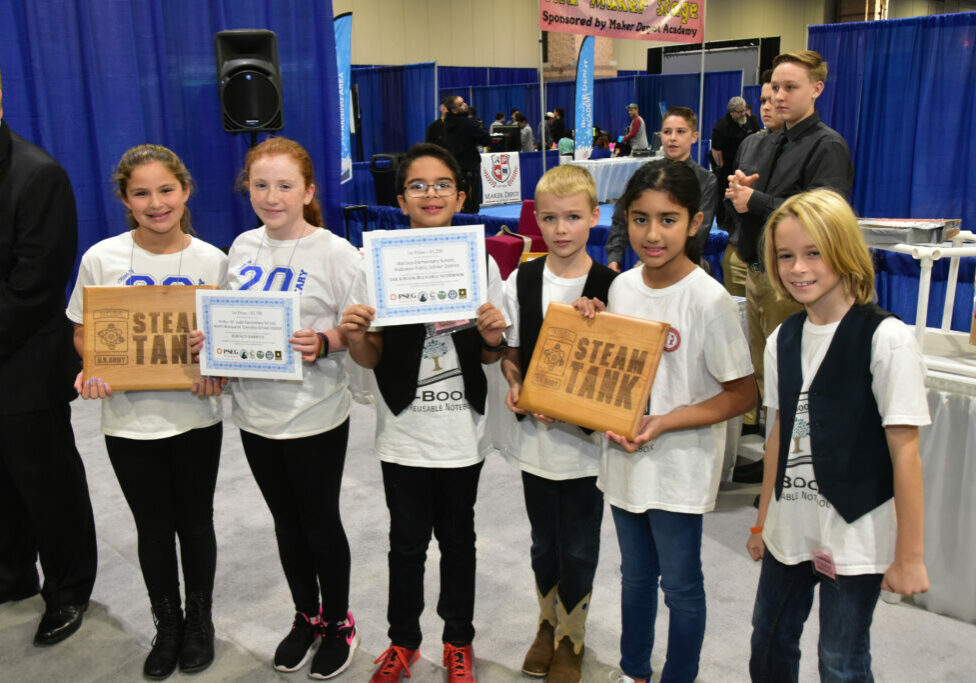A best practice in STEAM
By Dr. Stephanie D’Alessio and John P. Henry
tudents excited about learning is an integral part of lesson development and teaching and learning practices. Research has shown that student engagement is also an important part of retention. If you engage the student, achievement will follow.
Pedagogical practices such as direct instruction or compartmentalized teaching that lack or have limited connection to students’ interests or their lives, can disengage the learner from participating and retaining the content taught. In addition, schools that focus on “teaching to the test” may not allow opportunities for student-centered, authentic problem solving and “hand-on, minds-on” learning, missing the opportunity to raise students’ interest in their own learning.
Current research suggests a plethora of strategies that are deemed to be successful in getting students excited about learning. One of the most effective pedagogical strategies is problem-based learning (PBL). Not only does this type of experiential learning engage and excite students about the subject at hand, but also helps students to develop the skills necessary to be successful in their future endeavors.
This article will discuss problem-based learning (PBL) and its current expansion into a new pedagogy called “solution-based developmental learning” (SBDL).
What are PBL and SBDL?
PBL is a broad pedagogical approach to teaching that includes students working collaboratively to formulate solutions to real-world problems that are meaningful in their lives. It is usually introduced in the form of an open-ended activity or scenario where limited information is provided to the learners. Most activities are student centered and collaborative, allowing for choice, voice and student ownership of the process and solutions.
A key difference between problem-based and project-based learning is that the latter is more structured and better suited for a learning environment that has time constraints. Project-based learning often concludes with a tangible product. However, this product may lack authentic learning opportunities. Nonetheless, project-based learning is still a good entry point for teachers and younger students.
Building on the PBL theory, SBDL includes all of the components of quality PBL but adds real world connections and solutions to local and global problems. Facilitated by their teachers, students select the real-world problem they wish to address.
This new pedagogy, created in collaboration by the authors, not only uses the foundational components of PBL but also includes developmental goals of morality and empathy. Switching the focus to student-developed solutions to real-world problems not only develops the cognitive skills needed to be successful in the world but also facilitates the teaching of universal principles of empathy for human rights, justice and equality.
The theory behind SBDL
Theorists such as Aristotle, Dewey and Piaget first introduced the concept of hands-on, minds-on activities or what is commonly called learning from experience. In 1969, a group of medical students at McMaster University in Hamilton, Ontario first used problem-based learning addressing real life problems in the field of medicine. An effective PBL pedagogy and curriculum were used to construct meaning and solutions in the biomedical field. The university proved that using this teaching strategy would help their students to develop a pattern of problem-solving behaviors that supported lifelong questioning and solution formulation.

Recently, teachers across the globe have been using this pedagogical strategy in their classrooms to help develop critical thinking skills and the 21st-century skills needed to be successful in today’s global economy.
What seemed to be remiss in this pedagogy was the holistic development of the student. SBDL offers a holistic approach to PBL. When students engage SBDL activities they not only incorporate design thinking and engineering practices, but they also learn holistically. This is a systems-thinking approach to learning so the student sees all the parts to a situation they are attempting to solve. They become empowered, they approach problems from multiple perspectives, and they take into consideration the emotional diversity and equity in the problems that they address.
Students can select situations that they have a direct emotional connection to, such as the environment and climate change, societal issues, the COVID-19 pandemic or other pertinent global issues. When students are learning science, technology, the arts, engineering and mathematics (STEAM) through SBDL, they are learning. They move away from a fixed mindset to a growth mindset, empowering them in a post-pandemic world to address challenges that are yet unseen.
SBDL theory expands on theoretical components such as Kohlberg’s Moral Development. Kohlberg’s theory links a person’s moral development to their cognitive development. At the optimal level of development in this theory an individual has fully developed their moral beliefs and will defend those beliefs even if it means serious personal negative consequences. By solving local and global issues that support principles such as empathy for human rights, justice and equality, students develop a moral compass that allows them to grow holistically.
SBDL in practice
The first step for educators is to provide students with broad problems to solve. The educator must decide to either create an interesting real-world problem that is relevant or meaningful to the student—this is best for younger students—or have the students independently select something they feel strongly about.
Educators should also consider the end goal. You must determine what you want your students to be able to know, understand and do. Alignment to the state standards are always included among the first steps. SBDL is not just an open-ended problem and solution activity; it can be strategically planned to help the development of critical career-readiness skills. SBDL also goes beyond content learning while addressing universal principles of empathy for human rights, justice and equality.
Early on, students should consider the end goal and determine benefits and consequences of their solutions. This is where students begin to learn about the design-thinking process and systems thinking. They become aware that every decision they make has benefits, consequences and trade-offs. This forces students to look at our world and the many technological advances and determine if those technologies are really helping people or hurting the environment or our society in some way.
Educators should determine how much control they want to have. Teachers must decide if they want to direct every step of the process, which is less impactful. They may opt instead to allow it to be extremely open-ended, student-directed and teacher-facilitated, which increases student ownership and engagement. That decision will be based on circumstances of the individual school and other restrictions that teachers face.

For a classroom environment that needs more structure, the next step is for the educator to design a scenario or describe a situation for your students to solve. It is critical to ensure that the design of the activity:
- Is relevant and meaningful to the students’ lives.
- Is aligned to the standards.
- Is manageable for the teacher and the students.
- Is based in the real world.
Has an emphasis on improving something and helping people, animals, the environment or an issue of international importance.
Another way to accomplish this step is to have the students select a global issue that they feel strongly about. This increases student engagement and interest.
Another essential component is for students to determine how this will help the quality of life for people, protect the environment and increase equity. This is not a simple project-based learning activity where students create a poster on a topic and only look at one or two content areas. It is a deep dive for understanding how the solutions may impact people, ecosystems, the natural world and the species that live on our planet.
Another step is to consider the physical space in which students will work. The teachers should identify needed supplies and materials. Will any special technology and equipment be needed? What about storage capacity for student projects?
Teachers will often provide extensions to the learning beyond the four walls of the classroom. It is important for the teacher to know what the obstacles may be prior to the SBDL, even it is not always possible to identify every situation that may arise, especially if the students selected the problems to solve.
There are many other considerations: What impact will the school’s daily schedule and the district calendar have? What about safety considerations? What if the students are unable to complete the SBDL? What costs are involved?
Transparent communication and rationale is key for the success of the SBDL. Informing the administration as to what you are doing in the classroom is important because it may look different than traditional instruction.
SBDL can also be implemented as a schoolwide initiative to help support student learning and collaborative teaching in a school district. SBDL fosters the opportunity for teachers to work together and support students while they explore solutions to situations that they have identified.
It is important to recruit subject matter experts who can expand the knowledge base beyond the individual teacher. It helps students connect with someone who is not from the school and has information that they need to help them solve the problem they are addressing.
This also places the student in the role of an entrepreneur. Students quickly realize that they don’t have to know everything about the problem. They learn that they can find solutions through whatever means they have available. It takes away limiting beliefs of a fixed mindset of “I can’t” to a growth mindset of “I can.” These experts could be your colleagues or may include parents or experts in the community.
STEAM Tank provides a model
A comprehensive example of this pedagogy is the STEAM Tank Design Challenge. STEAM Tank is an open-ended entrepreneurial design challenge open to all K-12 students in New Jersey. It was created by the New Jersey School Boards Association (NJSBA) in collaboration with the U.S. Army.
Teachers of this program integrate SBDL principles into a framework of quality hands-on, inquiry-based STEAM programming relevant to students’ lives. Students work collaboratively in teams to identify real-world situations to find resolutions.
Although the teacher will be responsible for facilitating the class time, space and materials for the program, students should be given choice and voice in what and how their projects are developed and presented. Students pitch their ideas to subject matter expert judges from the NJSBA, the U.S. Army, outside organizations and industry partners. Finals are held annually at the NJSBA workshop—the largest leadership conference for school boards and school officials in the state.
The winners of the final competition have been announced and recognized at previous NJEA Conventions.
Engaging students in real-world problem-solving activities promotes an engaging classroom experience for both educators and students. The possibilities of exploration and solutions to the issues at hand are endless and can be inspirational and impactful for each student and the class as a whole. Students create solutions that can be applied to myriad global issues.
You can learn more about the STEAM Tank Challenge at njsba.org/services/isteam-2/steam-tank-challenge.
Putting Maslow over Bloom
SBDL is holistic in nature, addressing many aspects of a situation. Students see things from multiple perspectives and as a result, create inspirational and innovative and long-term solutions instead of short-term quick fix solutions just to get a grade. At its core, SBDL teaches children to use empathy and compassion to drive their solutions. It connects students to greater good in society and builds ethics and morals. It teaches the whole child.
In a post-COVID world, putting Maslow over Bloom is a common practice. Using solution-based developmental learning expands on problem-based learning by focusing on the moral development and socio-emotional competencies that are important for the successful growth and development of every child.
Stephanie D’Alessio, Ed.D., a graduate of the Educational Leadership program at Monmouth University, works in the Office of Education for the New Jersey Department of Children and Families, where she serves as the NJDCF’s assistant supervisor for the NJDCF Regional Schools in Ocean and Monmouth counties. John P. Henry, M.A., now retired, is the former senior manager for STEAM and Sustainable Schools. He is former director and creator of the STEAM Tank Design Challenge at the New Jersey School Boards Association. They can be reached through Dr. D’Alessio at Dr.StephanieDalessio@gmail.com.
